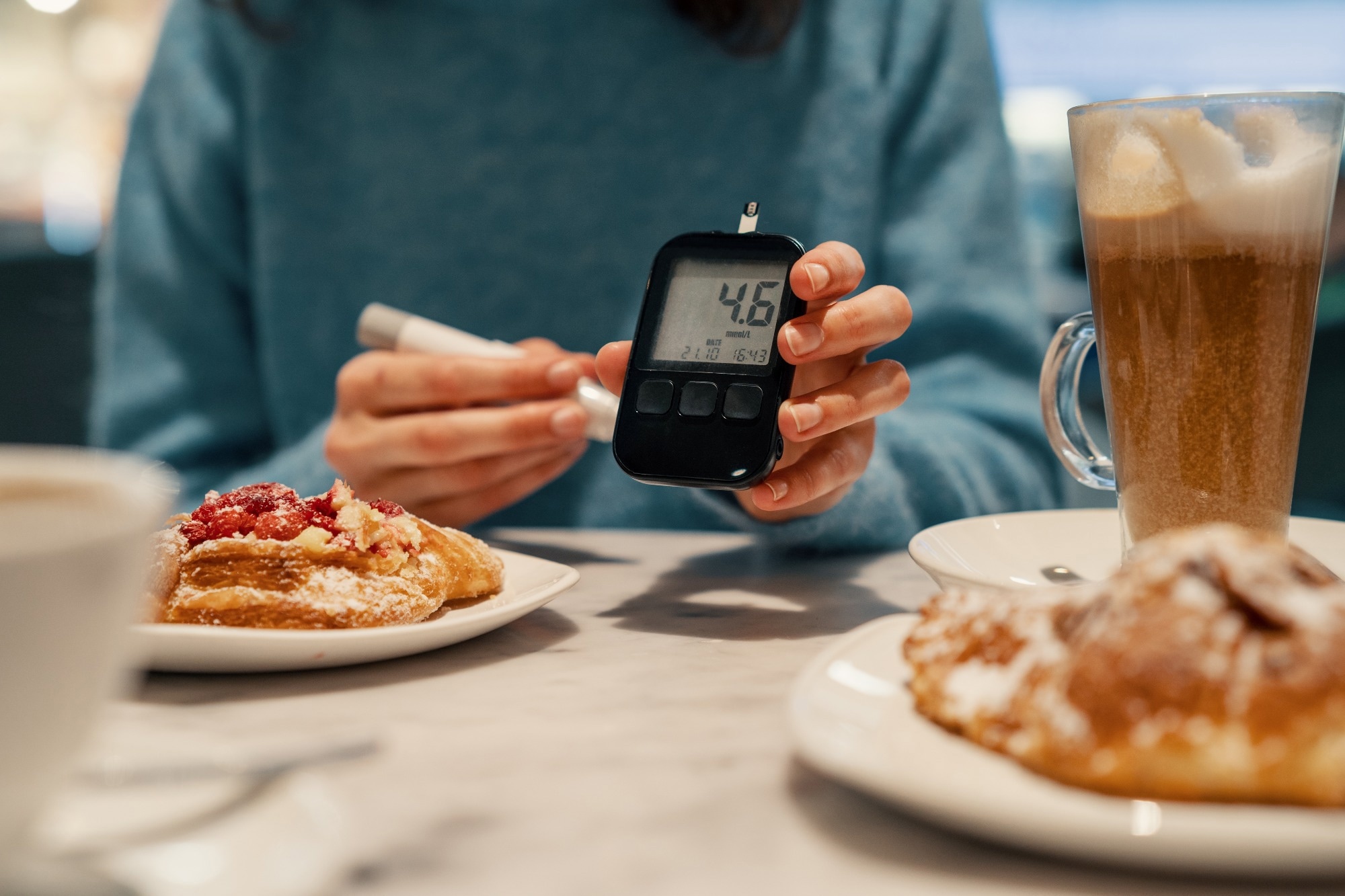A study analyzing the PIONEER trial data claims that orally administered semaglutide is highly effective in reducing glycated hemoglobin (HbA1c) and body weight in type 2 diabetes patients.
The study is published in the journal Diabetes Therapy.
 Study: Greater Combined Reductions of HbA1c ≥ 1.0% and Body Weight Loss ≥ 5.0% or ≥ 10.0% with Orally Administered Semaglutide Versus Comparators. Image Credit: Dulin / Shutterstock
Study: Greater Combined Reductions of HbA1c ≥ 1.0% and Body Weight Loss ≥ 5.0% or ≥ 10.0% with Orally Administered Semaglutide Versus Comparators. Image Credit: Dulin / Shutterstock
Background
Glucagon-like peptide 1 receptor agonists (GLP-1RAs) are a class of medicines commonly used to treat type 2 diabetes and obesity. These medicines have proven efficacy in reducing both blood glucose levels and body weight and providing cardiovascular benefits.
Semaglutide is a long-acting glucagon-like peptide 1 receptor agonist (GLP-1RAs) used to treat type 2 diabetic patients through once-weekly subcutaneous injection or once-daily oral tablet.
An HbA1c reduction of 1% or more and a body weight reduction of 5% or more are considered vital indicators of successful treatment response in patients with type 2 diabetes. These combined outcomes are associated with a lower risk of diabetes-related complications, including cardiometabolic diseases and chronic kidney disease.
The PIONEER (Peptide Innovation for Early Diabetes Treatment) clinical trials were designed to evaluate the therapeutic efficacy of oral semaglutide in type 2 diabetes patients worldwide. In the current study, scientists have analyzed the data collected from PIONEER 1 – 5 and 8 trials to compare the therapeutic efficacy of oral semaglutide with other anti-diabetic medicines tested in these trials.
Study design
In PIONEER 1 – 5 and 8 clinical trials, a total of 3,506 individuals with type 2 diabetes were randomly selected and treated with semaglutide, placebo, or other anti-diabetic medicines for 26 – 78 weeks. Anti-diabetic medicines tested in these trials were empagliflozin (a sodium-glucose co-transporter 2 inhibitor), sitagliptin (dipeptidyl peptidase 4 inhibitor), and liraglutide (GLP-1RA).
The efficacy of these medicines was assessed across a variety of background therapies, including diet and exercise, metformin, oral anti-diabetic medicines, or insulin. An HbA1c reduction of 1% or more and body weight reduction of 5% or 10% or more were assessed at weeks 26, 52, and 78 (end of the treatment) to determine treatment efficacy.
Important observations
The analysis of PIONEER trial data revealed that at the end of treatment, a significantly higher proportion of patients receiving oral semaglutide achieved 1% or more reduction of HbA1c compared to those treated with other anti-diabetic medicines.
Similarly, patients treated with oral semaglutide were found to be significantly more likely to achieve a 5% or more reduction of body weight compared to those treated with sitagliptin or liraglutide. However, this therapeutic outcome was comparable among patients treated with semaglutide and empagliflozin.
Considering the body weight reduction of 10% or more at the end of treatment, a significantly higher treatment response was observed in patients treated with semaglutide compared to that in patients treated with empagliflozin, sitagliptin, or liraglutide.
Considering the combined achievement of HbA1c (1% or more) and body weight (5% or more) reduction, a significantly higher treatment response was observed in semaglutide-treated patients at weeks 26 and 78, as compared to those treated with other tested medicines.
Similarly, patients treated with semaglutide were found to be significantly more likely to achieve both HbA1c (1% or more) and body weight (10% or more) reduction at the end of treatment (week 78) compared to those treated with other tested medicines.
Study significance
The study indicates that oral semaglutide is more effective than empagliflozin, sitagliptin, or liraglutide in terms of reducing HbA1c together with body weight in patients with type 2 diabetes. HbA1c is a well-established clinical indicator of glycemic control.
As mentioned by the scientists, the measurement of two or more distinct outcomes (composite endpoints) is better than a single outcome measurement (individual endpoints) for assessing the overall efficacy of an intervention. Thus, the combined reduction of HbA1c and body weight observed in diabetic patients more pronouncedly highlights the therapeutic efficacy of oral semaglutide.